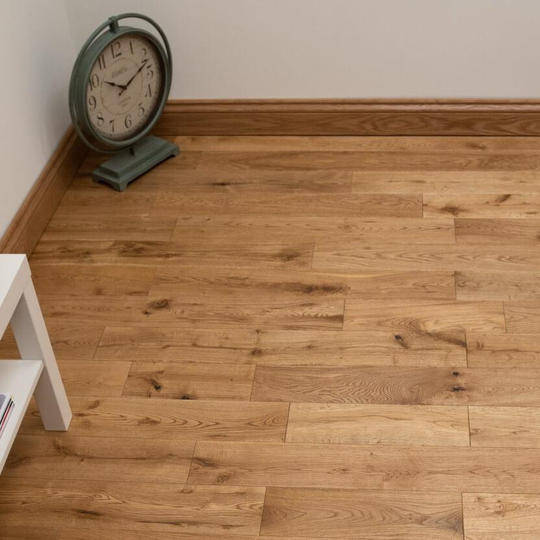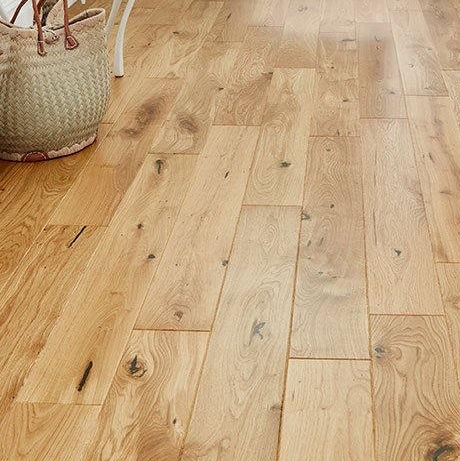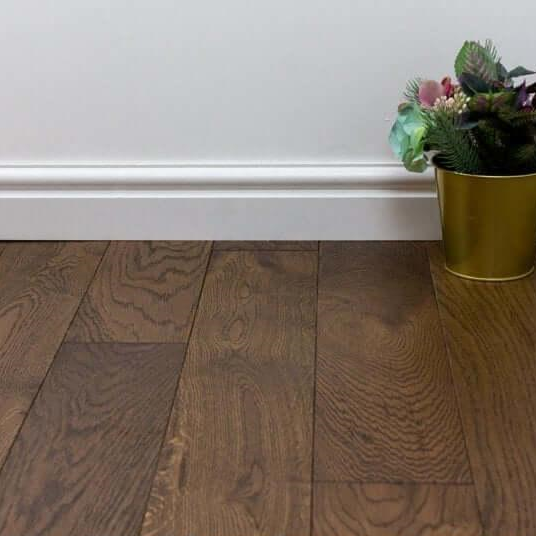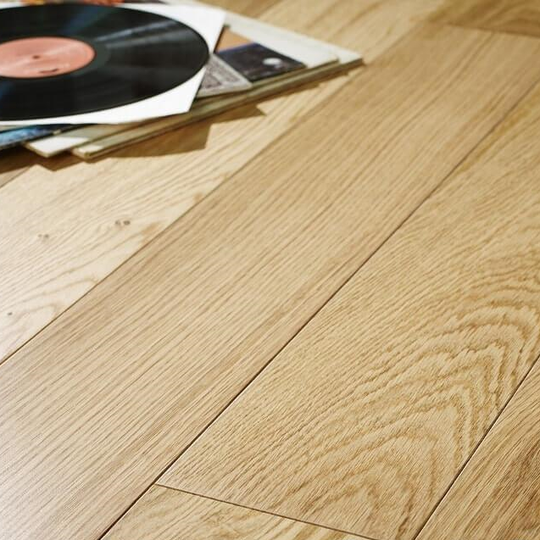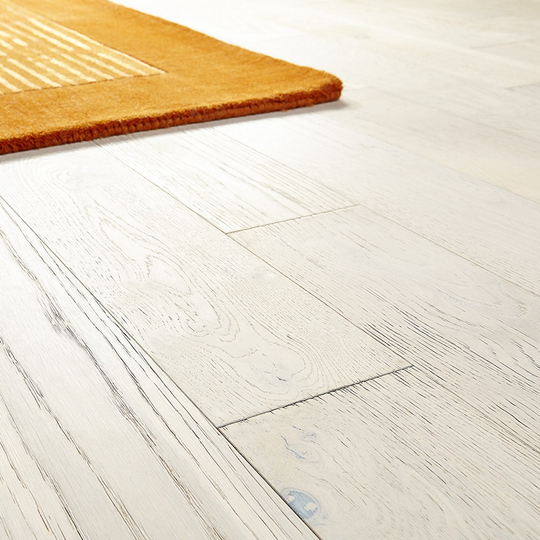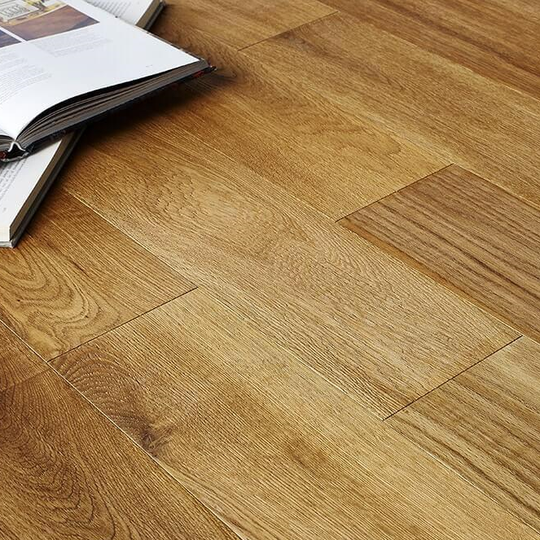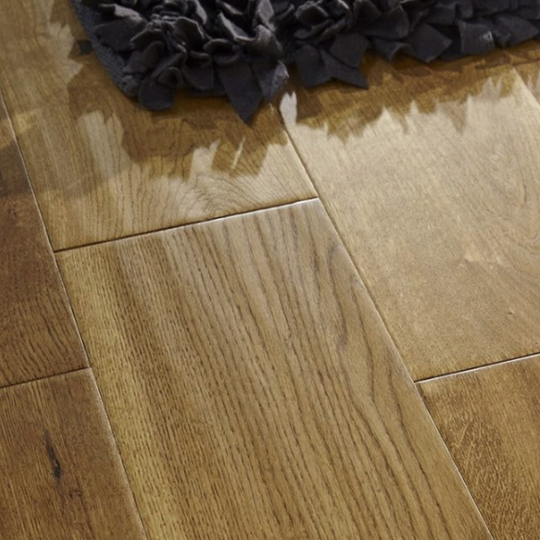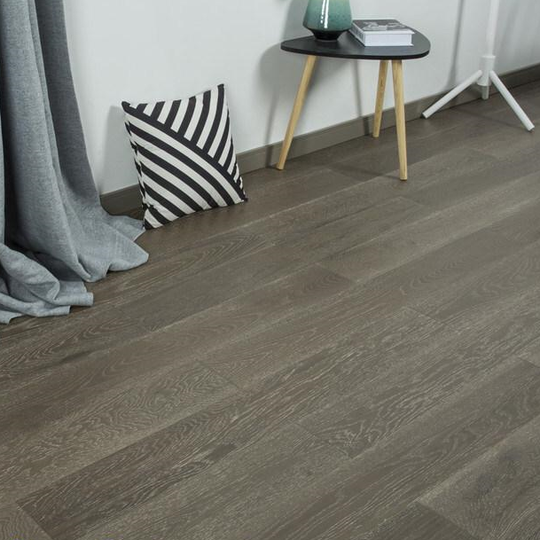Engineered Wooden Flooring
Wooden flooring bring everything that a real wood floor could along with other factors to improve quality and sustainability over time. They are built using layers of ply glued together, with a top layer of real wood. The finished product looks the exact same as a real wooden floor, but the extra durability makes them more stable and they require less maintenance. The locking systems are Tongue & Glue and so need to be glued together. The look and feel of an actual real wood floor makes them a popular choice for any customer desiring the genuine finish.
Are you ready to transform the beauty of your floors? Engineered wood floors offer durability, elegance, and timeless appeal.
At Mersey Flooring, we offer an exquisite collection of engineered wood floors in various styles, colours, and designs. These floors are built using layers of plywood glued together, with a top layer of real wood.
The finished product looks the same as a real wooden floor without the expensive price. Plus, the added durability makes it a great long-term investment and requires less maintenance.
- What is engineered wood flooring?
- What are the benefits of engineered wooden floors?
- How long does engineered flooring last?
- How do I clean and maintain engineered wooden flooring?
- What are the key distinctions between engineered and solid wood flooring?
- Are engineered wood floors waterproof?
- What is the best thickness for engineered wood flooring?
- Which installation method is best—floating, glueing, nailing or stapling?
- Can engineered flooring be used with underfloor heating?
Engineered wood flooring is crafted from multiple layers of material, including hardwood, oak, and base layers, often made from softwood or multi-layered plywood.
This is designed to mimic the look of real wood for less. The grain of each layer runs perpendicularly to the adjacent one, creating a durable surface. This design prevents the wood from swelling or shrinking.
Engineered wood floors are highly durable, making them ideal for frequently used rooms.
Its hard wear layer prevents wear and tear and temperature resistance stops it from warping in humid environments. With a simple click-and-lock installation, engineered flooring is the perfect option for a quick project or DIY job.
Engineered flooring typically lasts between 10-20 years when it’s properly maintained.
However, its lifespan can vary depending on the quality of the material, the thickness of the top layer, and how well you care for the floor.
To keep your engineered wood floors in great condition, regularly sweep and vacuum the floor to remove dirt and grime.
Use a mild detergent when mopping the floor to prevent damage to the surface. You could also place felt pads under the legs of your furniture to prevent dents and scratches.
The primary difference between engineered and solid wood flooring lies in their composition.
Solid wood flooring is made from a single, solid piece of wood milled from a tree. Whereas engineered wood flooring is a multi-layered design which features a top surface of real wood (often oak, ash, walnut or beech), also known as the wear layer or veneer.
Beneath this layer of real wood lies layers of engineered core materials, such as medium-density fibreboard (MDF), plywood, or softwood. While solid wood flooring tends to expand and contract more easily due to moisture and temperature changes, engineered wood is more stable, minimising expansion, contraction, and warping.
However, both are durable and long-lasting; solid wood flooring can be refinished multiple times to freshen its appearance, and engineered wood typically lasts 10 to 30 years with proper maintenance.
Engineered wood tends to resist water and excessive levels of moisture better than solid wood flooring.
However, it’s not entirely waterproof. While it can handle the odd spill, it’s not recommended for bathrooms, kitchens, or utility rooms where moisture levels are high.
As a general guideline, engineered wood flooring should be approximately 14mm to 15mm in thickness, with a maximum thickness of 18mm for underfloor heating systems.
The wear layer should be approximately 2 mm to 4 mm thick to provide a protective surface that is both protective and aesthetically pleasing.
The best installation method for your engineered flooring depends entirely on the type of subfloor you have.
If you’re installing on concrete or plywood, then the floating floor method is a great choice. For this, the planks are clicked or glued together at the joints and ‘float’ over an underlay without being attached to the subfloor.
If you’re working with concrete and you want something secure and long-lasting, then opt for glueing your floors. The engineered boards are glued to the subfloor with a strong adhesive, providing a solid underfoot feel.
Nail-down installations are more suitable for timber subfloors, as they provide less movement. However, this is more beneficial for thicker engineered flooring, as the boards are secured to the wooden subfloor or joists using nails or cleats.
Yes! Engineered flooring is a great choice for both wet and electric underfloor heating systems, provided that the surface temperature doesn’t exceed 27 °C.
Engineered wood can handle higher temperatures and fluctuating heat better than solid wood floors. The multiple layers of material give it greater dimensional stability, meaning it’s far less likely to expand, contract or warp.
Look for a UFH-approved label when purchasing engineered floors for underfloor heating.
